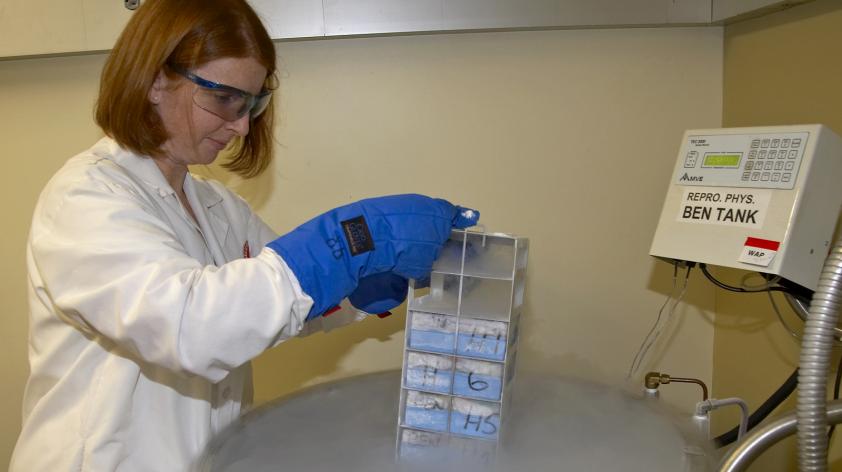
Frozen Zookeeper
It is 5:00 p.m. on a Friday, I am wearing comically large blue gloves and bright pink-rimmed goggles as I hold the hose of spouting liquid nitrogen over the mouth of a small storage tank. This tank holds samples from a cheetah, a Guam kingfisher, a Pacific pocket mouse and 19 other species. As vapor courses over the floor, people walk by and take pictures. I look like a mad scientist from a movie but with slightly less wild hair.
This same scene can be witnessed every week. It is one small part of the most important job duty I have: to care for and expand the Frozen Zoo collection. The Frozen Zoo has many care takers and contributors and we work as a team to make sure the world’s largest and most diverse collection of fibroblasts, sperm, oocytes, embryos, blood and reproductive tissues is kept safe and, most importantly, frozen.
The Frozen Zoo is a treasure trove of cells and tissues the impact of which we can’t fully comprehend and we all feel the weight of its importance. This is why we are diligent about making sure all systems are functioning.
I experience a roller coaster of emotions working in Reproductive Sciences as our job begins most often when an animal’s life has ended. We are heavy-hearted when we hear an animal has passed away but then we are excited for the idea that we could collect and freeze its reproductive cells to create life in the future.
These cells could be called upon to save a species from extinction.
Inside of these large silver tanks that line the Frozen Zoo are thousands of tiny vials containing cells and tissues that we keep track of using a computerized inventory. This inventory allows me to peek into the past. It is always fascinating to see what species were added before I began working for the San Diego Zoo fifteen years ago. There are frozen vials of cells and tissue from species I have never seen in person such as a Sumatran rhinoceros and a golden-bellied mangabey.
Over 400 species’ reproductive cells and tissues are represented in the Frozen Zoo from over 1700 individuals. That is the accumulation of 37 years of processing and freezing samples. I know that the most important contribution to conservation I will make, will be keeping these vials safe during my time here.













